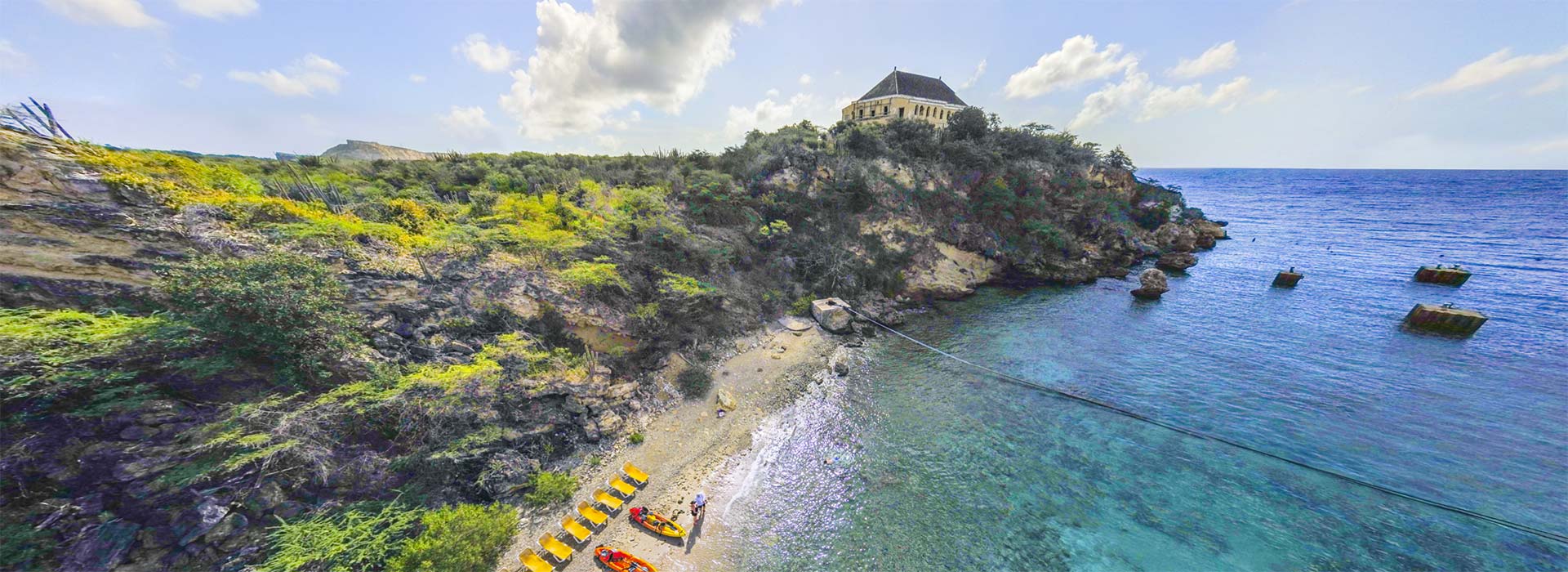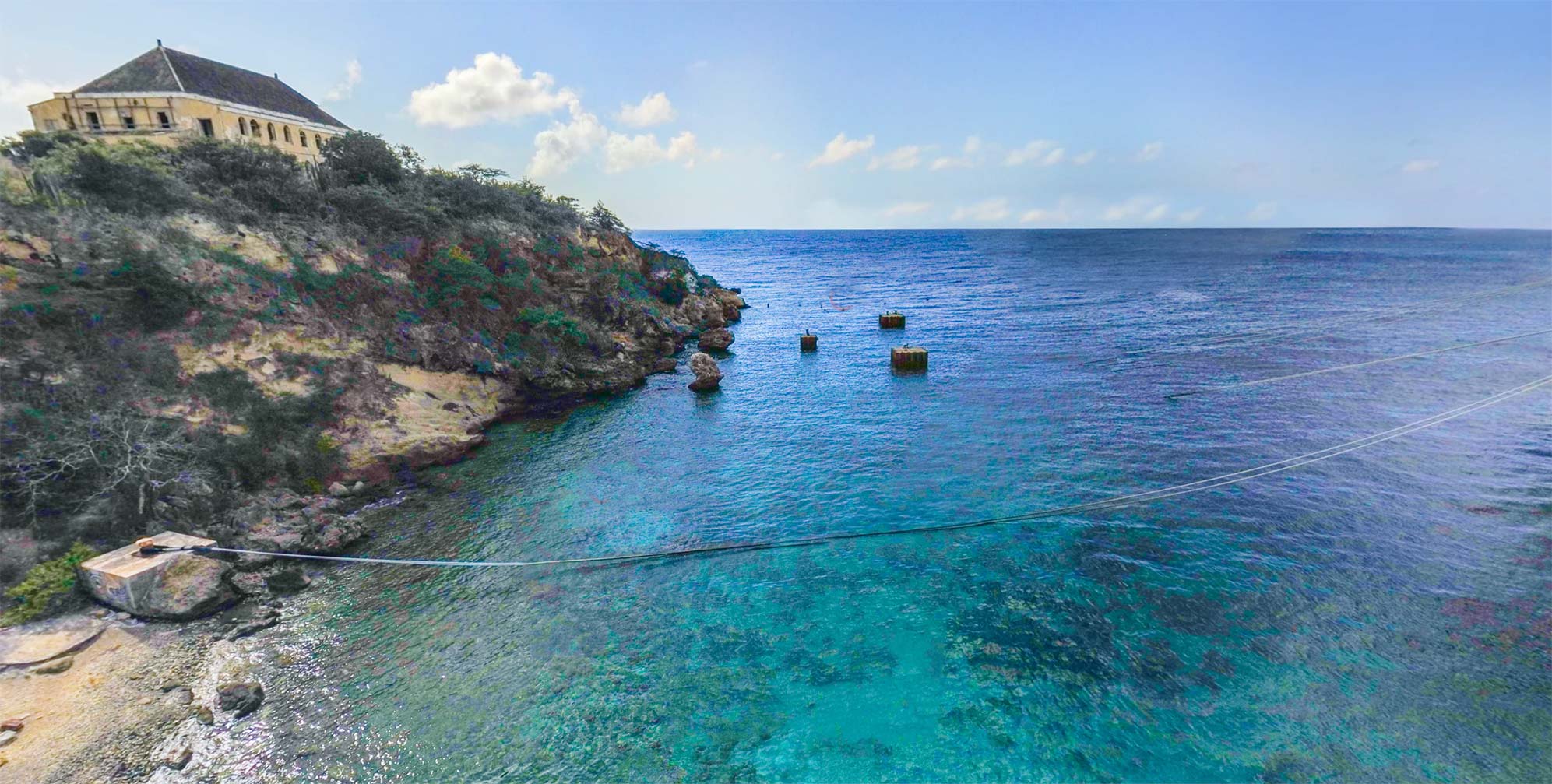
21 Jan Tugboat Beach, Curaçao
Perhaps your notion of a postcard-perfect tropical reef snorkeling beach does not include a massive drillship moored right next to it. But the fact that the Noble Bully 1 is there paradoxically is one reason why Tugboat Beach (AKA Baya Beach) is a perfect place to spend a day if you’re a diver visiting Curaçao.
This remote beach is about 4.5mi (7km) SE of the capital of Willemstad. It is accessed by a rutted dirt road which begins where the pavement ends, east of Caracasbaai Beach. The entire peninsula, originally an island, was owned by Royal Dutch Shell and used as an oil terminal until 1996. The several docks and the industrial feel of the place suggests its previous life. The area has an somewhat dicey reputation for its security, but as long as the drillship is cold-stacked (mothballed) there, a manned guard post makes the beach as safe as can be.
The diverse and thriving shallow reef, with its 60ft (18m) drop-off wall continuing around the point, offers adventures for both the casual snorkeler and the scuba diver. But the main feature here is the sunken tugboat, located about 300ft (92m) from the coral-rubble beach. The wreck has been here, lying at a shallow depth of only 18ft (5m), since the 1990s. The top of the tugboat is only 5ft (1.5m) below the surface. You can see the wreck in virtual reality, and peer in to visit the schools of fish in residence, by clicking on its red hotspot in the VR at the top of the page.
There is a sincerely-no-frills beach bar on the shore, Baya Beach Club, where the affable owner, Willem, will sell you a cold beer, store your valuables, and rent you snorkel gear. The two cats in the bar at first seemed to be stuffed, but they are just extremely mellow.
Nearby are the ruins of Fort Beekenburg, built in 1703 to protect the entrance to the bay behind it, Spaanse (Spanish) Water. The fort’s round tower was constructed from stones that were brought from the Netherlands to Curaçao as ship’s ballast.
The large building on the point is identified in the virtual-reality tour as an abandoned quarantine hospital. It was built in 1883 to isolate mariners who arrived on the island with yellow fever, and avoid their spreading the disease through the local mosquito population. This historic structure with a great view is for sale, in case you are interested in a fixer-upper.





No Comments